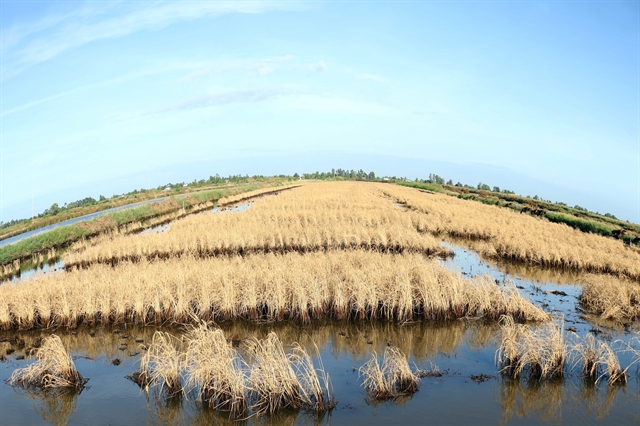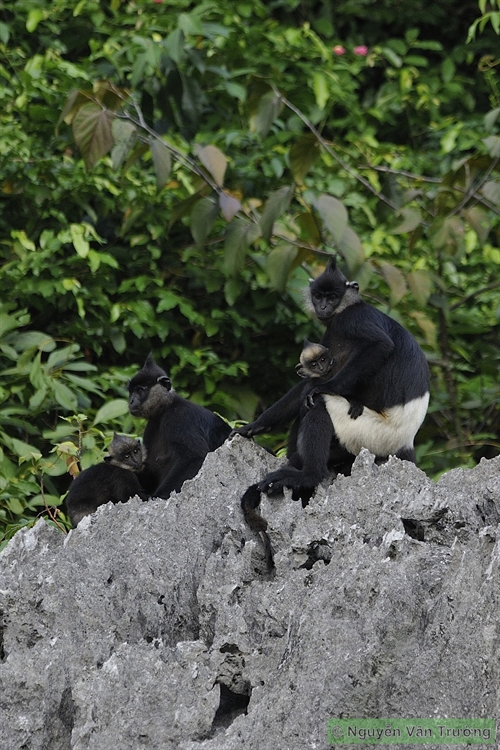 Environment
Environment

The world’s second largest population of the critically endangered Delacour’s langur was recently discovered by Fauna & Flora International (FFI), giving fresh hope for one of the planet’s rarest species.
 |
| Việt Nam’s prized primate, the Delacour’s Langur.— Photo Nguyễn Văn Trường |
HÀ NỘI — The world’s second largest population of the critically endangered Delacour’s langur was recently discovered by Fauna & Flora International (FFI), giving fresh hope for one of the planet’s rarest species.
Following reports of sightings in a once largely unexplored forest in north Việt Nam, scientists from conservation NGO FFI Vietnam conducted field assessments to ascertain whether this species does indeed live in the area.
FFI Vietnam’s Biodiversity Technical Advisor Trịnh Đình Hoàng said, "Our surveys and assessment revealed that there was a population of significant size. We detected seven groups of Delacour’s langur, with the total number of primates in the population being as high as 40. Only one other area in Việt Nam has a larger population of Delacour’s langur."
Delacour’s langur is indigenous to Việt Nam, but because of human activities such as hunting, stone mining and charcoal production, it faces a severe threat of extinction with fewer than 250 left, a press release issued yesterday said.
Although they remain under grave danger of being wiped out within a decade, scientists now have renewed hope that they can be saved.
"This discovery is good news – both for the species and for the people of Việt Nam, particularly because we have also identified a number of infants and juveniles among the groups,” Hoàng said.
“This means that they are breeding and, if we can protect them, they should be able to thrive in this habitat once again."
However, Dr Benjamin Rawson, country director of FFI Vietnam, warned that urgent interventions to curb human activity such as hunting and mining were needed to safeguard these prized primates and their habitat.
Speaking at the Congress of the International Primatological Society in Chicago, he said, "We’ve notified the Vietnamese authorities of our findings and recommendations, and we continue to work alongside officials and local communities to ensure the Delacour’s langur doesn’t become this century’s first primate extinction."
Delacour’s langur (Trachypithecus delacouri) is a primate endemic to Việt Nam, first discovered by Jean Théodore Delacour in 1930 and described by Wilfred Hudson Osgood in 1932.
In the early 1990s, a comprehensive survey recorded 19 isolated subpopulations comprising 50 to 57 groups and 281 to 317 individuals in an area of about 5,000sq.km in north Việt Nam. More recent surveys indicated that there has been a significant decrease in both the number of groups and the number of individuals. — VNS









